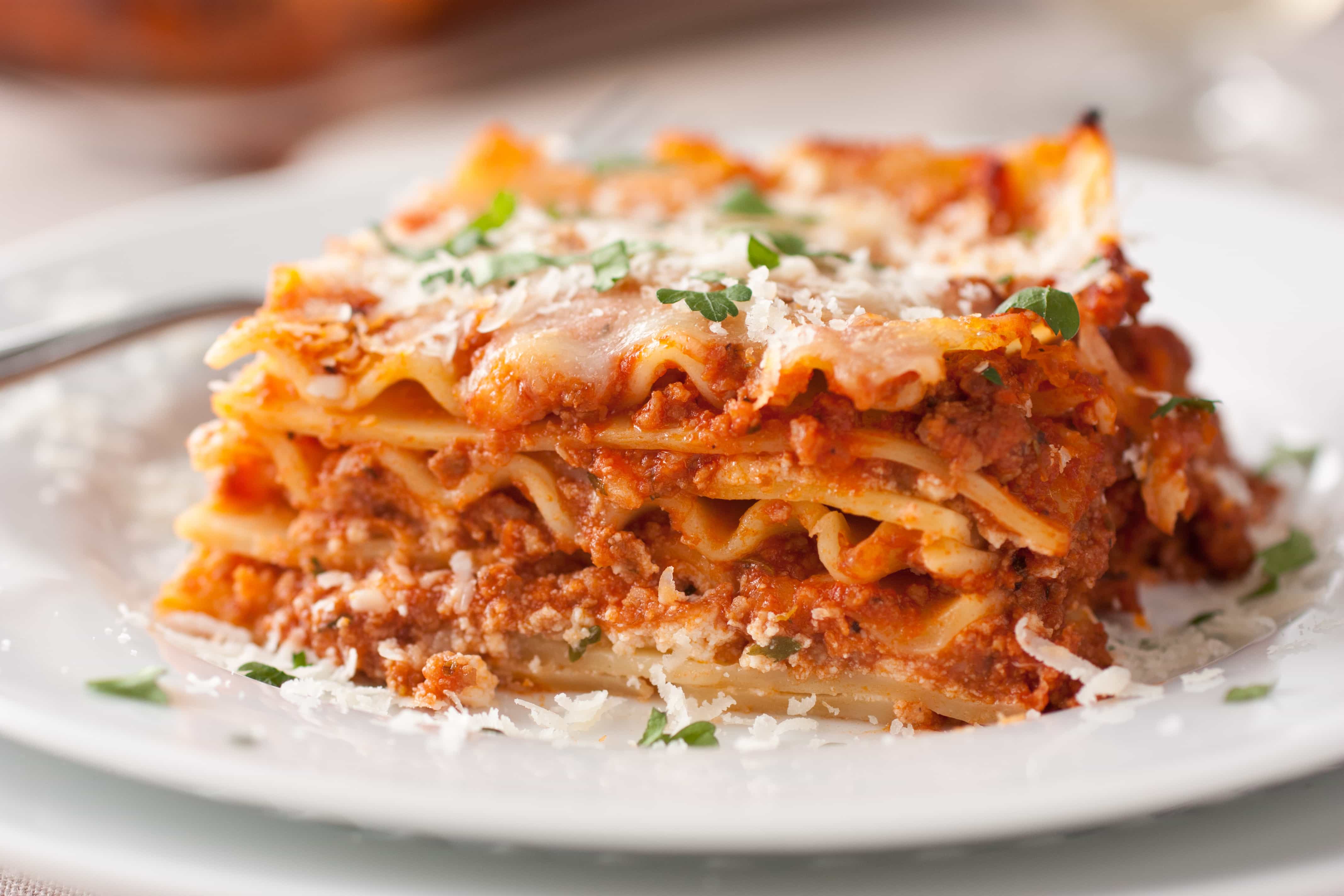Italian Food

One of the most popular food originating from Italy, pizza has become a worldwide favorite. In the United States its popularity began after World War II. Today we have over 50,000 places selling about $30 billion of pizza per year in North America alone. At least five factors have fueled its growth. First, pizza combines ingredients from all basic food groups. Second, it requires personal involvement — the cutting, picking, pulling actions make it a unique eating experience. Third, it’s a social food. Eating pizza involves sharing — the “breaking of bread.” Fourth, pizza embodies exciting, universal flavors — fresh baked bread, tangy tomato, Italian seasonings, cheese and, in many cases, spicy meats and vegetables. Finally, it’s a versatile food that has thousands of variations. It’s no wonder this amazing creation has risen from humble beginnings to become one of the world’s most exciting, popular, and interesting foods.
Modern day lasagna, the richly layered dish swimming in sumptuous tomato sauce, made its debut in Naples, Italy, during the Middle Ages. Laboriously crafted and fit for a crowd, lasagna was savored on special occassions. While traditional Italian lasagna features ragù, béchamel and Parmigiano-Reggiano hugged between layers of pasta, Italian immigrants brought their favorite variations to America beginning in the late 1800s. While some prefer a meatier sauce made with pork or ground beef, others added roasted vegetables and spinach to the layers.


The Italian translation for tiramisu is “carry me up.” Also known as Tuscan Trifle, tiramisu is a pudding-like dessert that usually consists of sponge cake or ladyfingers dipped in a liqueur, then layered with grated chocolate and rich custard. Tiramisu was originally made as a loose custard. It is only in recent years that using mascarpone cheese has come into fashion. It is believed that a dessert similar to tiramisu was was created in Siena, in the Italian province of Tuscany. The occasion was a visit by Grand Duke Cosimo de’ Medici III (1642-1723), in whose honor the concoction was dubbed zuppa del duca (the “duke’s soup”). He brought the recipe back with him to Florence. In the 19th century, tiramisu became extremely popular among the English intellectuals and artists who lived in Florence. The dessert made its way to England, where its popularity grew.
The origin of spaghetti and meatballs started with Italian immigrants coming to America in 1880 to 1920. The majority of immigrants were extremely impoverished, and had been spending 75 percent of their income on food in Italy, compared to only 25 percent in the U.S. Meat quickly became a staple, and families were putting meatballs more frequently on the table. Spaghetti soon became greatly popular in the U.S. because it was one of the only Italian ingredients available.
